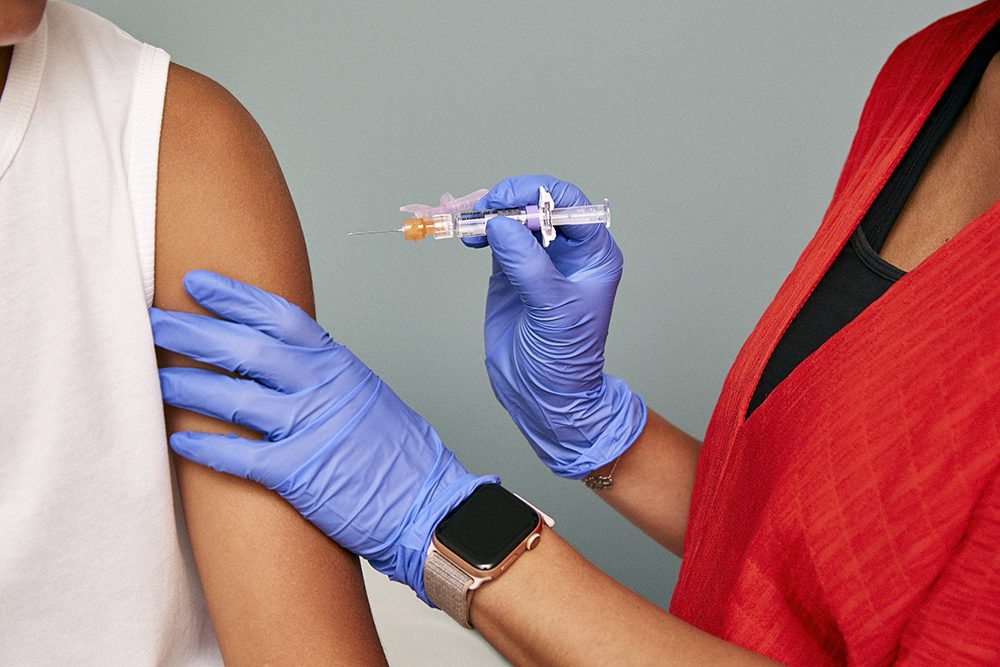Gertrud U. Rey


Vaccination against the vaccine-preventable diseases is preferable to natural infection because it prevents illness and the long-term effects associated with many infections; and in most cases, it also leads to better immunity. In the case of immunity induced by SARS-CoV-2 vaccination, it is slowly becoming clear that the immunity is of overall better quality than that induced by COVID-19.
Vaccination leads to production of polyclonal antibodies, which are derived from many different types of B cells and may target many different portions of an antigen (i.e., “epitopes”). Isolation of B cells from a blood sample allows one to artificially produce monoclonal antibodies, which are derived from a single type of B cell and target a single epitope. Using blood samples from 6 SARS-CoV-2 mRNA vaccine recipients and 30 COVID-19 survivors, the authors of a recent publication compared the dynamics of vaccine-induced antibody immunity to those resulting from natural infection. A comparison of total antibodies between the two groups of people revealed that polyclonal antibody levels in vaccinees were generally higher than those in COVID-19 survivors. However, when the authors tested the antibodies from vaccinees for SARS-CoV-2 neutralizing activity, only a minority were neutralizing, including antibodies that target the receptor-binding domain (RBD) on the SARS-CoV-2 spike protein.
To see whether any of the neutralizing antibodies from vaccinees were capable of binding to the RBD, the authors performed competition experiments, where they exposed the antibodies to the SARS-CoV-2 RBD alone, or to RBD pre-mixed with its binding target – the human ACE2 receptor. This experiment revealed that increasing concentrations of ACE2 led to decreased antibody binding, suggesting that the antibodies compete with the ACE2 receptor for binding to the RBD, and that they neutralize the virus by inhibiting its binding to ACE2.
A plasmablast is a type of B cell that differentiates from an immature B cell into a mature plasma cell, which can produce large amounts of a specific antibody. Although they are short-lived, plasmablasts also make antibodies, and are typically abundant and easy to isolate from peripheral blood. Analysis of monoclonal antibodies produced from the plasmablasts of vaccinated individuals showed that a substantial number of these antibodies also bound the N-terminal domain of the SARS-CoV-2 spike protein in addition to the RBD, suggesting that these two epitopes co-dominate as antibody targets.
“Original antigenic sin” is a phenomenon initially discovered with influenza viruses, where the immune system mounts the strongest response to the first version of one particular antigen encountered (i.e., the first virus variant with which one is infected in life). Similar observations have been made in the context of COVID-19, with natural SARS-CoV-2 infection purportedly also substantially boosting antibodies against seasonal β-coronaviruses OC43 and HKU1. To see if SARS-CoV-2 vaccination produces a similar effect, the authors analyzed the specificity of antibodies isolated from vaccine recipients before and after vaccination against the spike protein of α-coronaviruses 229E and NL63 and β-coronaviruses OC43 and HKU1. Although vaccination did not increase titers of pre-existing antibodies against 229E and NL63 viruses, it did increase titers against OC43 and HKU1, consistent with what happens during natural SARS-CoV-2 infection. These results suggest that some of the vaccine-induced antibody responses may be biased by pre-existing immunity to other circulating human β-coronaviruses.
The authors also determined whether plasmablast-derived monoclonal antibodies and polyclonal antibodies from the sera of COVID-19 survivors and vaccinated individuals could bind to the RBDs of different SARS-CoV-2 variants. Although complete loss of binding was rare, antibodies from COVID-19 survivors varied widely in their ability to bind to different variants. Antibodies isolated from vaccinees varied less, depending on the variant. However, for most plasmablast-derived monoclonal antibodies from vaccinees, there was no impact on binding to RBDs in the binding assay used, regardless of the variant.
This study raises several interesting points. First, the ability of SARS-CoV-2 vaccination to boost pre-existing antibodies against HKU1 and OC43 supports the premise for a universal β-coronavirus vaccine, several of which are already in development. Second, the ability of the RBD and N-terminal domain to co-dominate in eliciting spike-specific antibodies justifies the use of vaccines containing the entire spike protein, rather than just the RBD. Third, although it is surprising that vaccination induced so few neutralizing antibodies, the role of non-neutralizing antibodies in protection against disease and infection is currently unknown. Considering that vaccination is obviously so protective against disease and asymptomatic infection, the authors speculate that the antibodies induced by vaccination could have protective functions outside of neutralization. Lastly, the fact that vaccination-induced antibodies fluctuate little, if at all, in their ability to bind the RBDs of different variants compared to antibodies induced by natural infection, suggests that vaccination is more likely to protect from different variants than natural infection. Collectively, these findings further highlight the importance of vaccination for ending this pandemic.

Great, great article, Professor! Thank you Professor Racaniello for sharing your knowledge and concerns about the pandemic and the vaccination. Here in Brazil, this kind of study never will be discussed or revealed by general press. The main stream has already chosen a “truth” of an unknown disease pattern. Anything said or published against this “truth” are severely censured by sensationalist journalists and press editors. Fortunately, we, researchers, are press independent to get our daily scientific updates. But… how about the general population?
Neutralization of actual virus is accomplished by one antibody attaching anywhere, an old observation of Dulbecco. It’s nice if attachment is to a critical binding site, but not required. TRIM21 is the reason for it, the intracellular immune system element that ubiquitinylates. This SARS2 is an ordinary virus, not ebola filaments that can be up to 14 microns long. So TRIM21 is not compromised for this coronavirus.
I would also ask, why aren’t CD8 cells being tested for activation? It is doubtful this response will be as good in vaccinees, although one would hope for it. Antibodies protect, and buy time, but they cannot clear a virus infection.